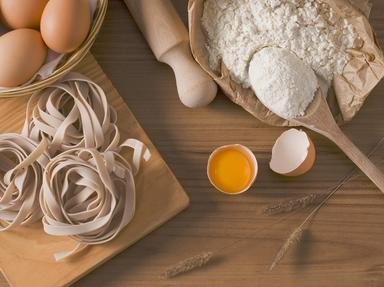Quiz Answer Key and Fun Facts
1. For our first course I've prepared chevre and honey caviar using a technique called spherification. What is molecular gastronomy caviar?
2. In spherification sodium alginate is mixed directly with the chosen liquid (or puree) and dropped in calcium chloride and water to achieve the desired result.
3. I used another technique called gelification for our next course of arugula pasta. Gelification is the process of turning a substance into a gelatinous form with the help of a gelling agent. One type of gelling agent is agar agar. Which of the following statements is not true of agar agar?
4. Molecular gastronomy uses hydrocolloids for thickening and gelling. Which statement is true of hydrocolloids?
5. Pectin is an example of a gelling agent used in the traditional kitchen, particularly in jams and jellies.
6. For our main course, salmon with Dijon lemon caviar, I'm using the sous vide technique. Sous vide is a method in which food is immersed in a water bath. In traditional cooking what is a water bath?
7. Another technique used in molecular gastronomy, flash freezing, is the process of rapid freezing using liquid nitrogen.
8. Now for the "pièce de résistance"! For our dessert course of Crème Anglaise with Coffee Air I'm using a technique called emulsification. What does emulsifying mean in basic cooking terms?
9. The Food and Drug Administration (FDA) has relaxed many of its guidelines for molecular gastromomy ingredients.
10. Because molecular gastronomy uses high tech methods and ingredients, normal kitchen safety regulations for food handling are not applicable.
Source: Author
sally0malley
This quiz was reviewed by FunTrivia editor
WesleyCrusher before going online.
Any errors found in FunTrivia content are routinely corrected through our feedback system.

